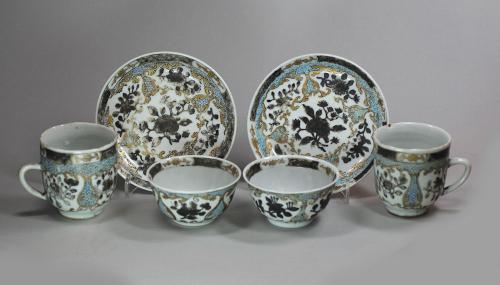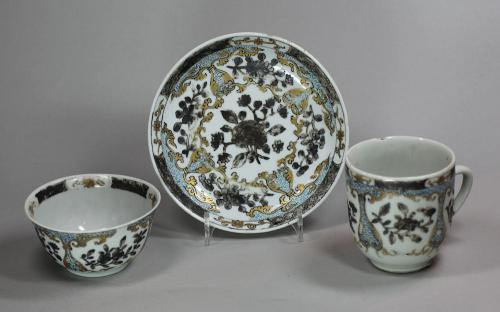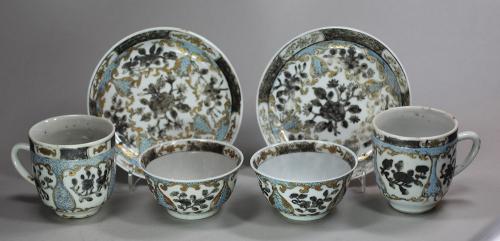
Price on application
This object is eligible for a Certificate of BADA Provenance
The BADA Standard
- Since 1918, BADA has been the leading association for the antiques and fine art trade
- Members are elected for their knowledge, integrity and quality of stock
- Our clients are protected by BADA’s code of conduct
- Our dealers’ membership is reviewed and renewed annually
- Bada.org is a non-profit site: clients deal directly with members and they pay no hidden fees
Massive Japanese Imari charger, early 18th century, Edo period, painted in underglaze blue, iron-red, green and black enamels to the centre with a pair of carp, one black the other red and gold, in a rocky pool at the foot of a waterfall, the black carp attempting to leap up against the flow of the water, with boughs of peony, pine and cherry issuing from the rocky crags, the wide rim with alternating peony head sections, either with a red and gold flowerhead against a gilt and blue foliate scroll ground, or a pink half flowerhead with buds and blue foliate scroll against a white reserve ground, all within concentric blue circles to the cavetto and rim; the reverse with floral boughs including plum and chrysanthemum, the foot encircled by further concentric blue bands, the base with usual spur marks.
Diameter: 53 cm. (20 7/8in.)
Condition: Some rubbing.
Notes:
Carp (koi) are an important symbol in Japanese culture and art, representing good fortune and perseverance – indicated here by the fish attempting to leap up against the rapid waters of the waterfall. They are also associated with a festival called ‘tango no sekku’ (端午 originally ‘boy’s day’, now ‘kodomo no hi’, or ‘children’s day’), which is celebrated on the fifth day of the fifth month. In the run-up to the festival, Japanese families hang colourful carp streamers (koinobori) outside their homes to celebrate their children and wish them good health and a prosperous future. While children are generally represented by blue or green carp, black carp are known as ‘magoi’ and represent the father of the household, while red carp (higoi) represent the mother – together they symbolise a harmonious family. While the carp, along with the pine, peony and cherry depicted here hold special symbolic meaning within Japanese culture, the dish, along with other Imari-type wares, was produced specifically for export from Japan to Europe where the design would have been purely decorative. During this period the Japanese government enforced an isolationist ‘sakkoku’ policy according to which the Dutch were the only Europeans permitted to engage in trade with Japan, and even then only from an artificial island just off the coast of Nagasaki called Dejima. Ceramics for export were principally made further north in Kyushu in the town of Arita, where clay suitable for making porcelain had been discovered early in the seventeenth century. From the kilns in Arita, porcelain was shipped to Nagasaki from the nearby port of Imari, which gave its name to this type of ware decorated richly in underglaze blues, enamels and gilt. From there, ceramics would have been transported by the Dutch, along with other goods including precious metals and lacquerware, back to Europe, possibly via their colonies in Southeast Asia. The combination of underglaze blue with bright, predominantly red enamels and ornate gilt was produced through multiple firings in a reduction atmosphere kiln, initially firing the plate with only the cobalt oxide decoration, before firing again at a lower temperature after decoration in more heat-sensitive enamels and gilt had been applied.
Dimensions
Diameter: 53 cm. (20 7/8in.)Condition report
Some rubbingStock number
W829The BADA Standard
- Since 1918, BADA has been the leading association for the antiques and fine art trade
- Members are elected for their knowledge, integrity and quality of stock
- Our clients are protected by BADA’s code of conduct
- Our dealers’ membership is reviewed and renewed annually
- Bada.org is a non-profit site: clients deal directly with members and they pay no hidden fees




